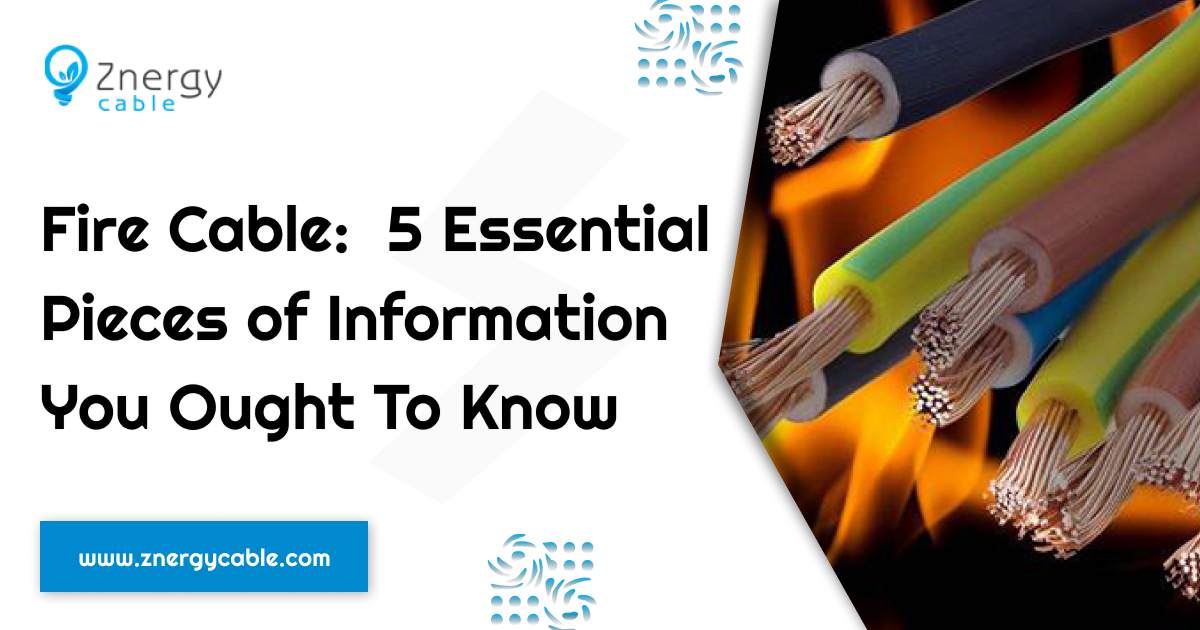Commercial buildings, office towers, hospitals, motels, train stations, and other areas with high density housing, occupancy, and use of people typically utilise Fire Rated Cable. Fire-cable have evolved over several decades, and their properties are now well-established. Fire certified cables are flame retardant, which means they prevent the spread of fire along the cable if it is exposed to a fire source at a specific place. When exposed to fire, they also generate less smoke and harmful combustion products, guaranteeing that building evacuation paths are not obstructed by smoke and that there is less influence on people’s health if inhaled, which could potentially obstruct their ability to flee during fire situations.
Another crucial feature is that fire-rated cables can continue to function in the event of a fire (often termed circuit integrity under fire). Exit signs, exhaust fans, elevators, fire fighting sprinkler systems, and water pumps, among other emergency services, can continue to operate as a result of this.
All of the features that fire cable are constructed which are properly covered by an Australian cable Standard, however the way the cables are installed can affect their ability to pass the test regime set out by these Australian Cable Standards.
The following are some instances of installation methods that can affect the performance of fire-rated cable and are often neglected.
- If the fire rating is to be maintained, joining fire cable should be avoided because no commercially available fire rated cable joint meets the same fire rating test as the cable (AS/NZS 3013). Joining a fire rated cable is acceptable only if it is done outside of the region where the fire rating is necessary.
- Enclosing fire cable in plastic or metal conduit or trunking should be avoided since it will modify the cable’s performance during a fire, causing it to stop working and maintaining circuit integrity for the time it was intended. Because the combustion mechanism of the materials used in fire resistant cables is complex and can vary if they are surrounded by other plastics or metals, this approach should be avoided.
- The cable/s must be supported on a suitable metallic cable tray and fastened using non-flammable materials such as steel ties, clips, or similar to guarantee the circuit integrity of a fire rated cable system is maintained. Plastic ties and ropes should not be used. Fasteners for the cable support system must also be made of steel, such as steel bolts and screws.Fasteners made of aluminium and/or plastic should be avoided. (This is why fire cable are only made with copper conductors, as copper’s melting point is 1085 oC, which is higher than the AS/NZS 3013 test temperature) (1030 oC). The melting point of aluminium is only 660 degrees Celsius.
- If fire rated cables are put in the same cable tray as non-fire rated cables, the cables’ capacity to maintain circuit integrity in the event of a fire will be harmed due to bunching and proximity to other wires. Bunching must be avoided while installing Fire Cable on separate cable trays.
- If fire rated cables are inserted in the same cable tray as non-fire rated cables, but circuit integrity is not required, the other cables must also be of a kind that has similar low smoke and non-toxic materials to maintain the system’s low smoke and hazardous combustion features. This category does not include cables with PVC insulation and/or sheath.
